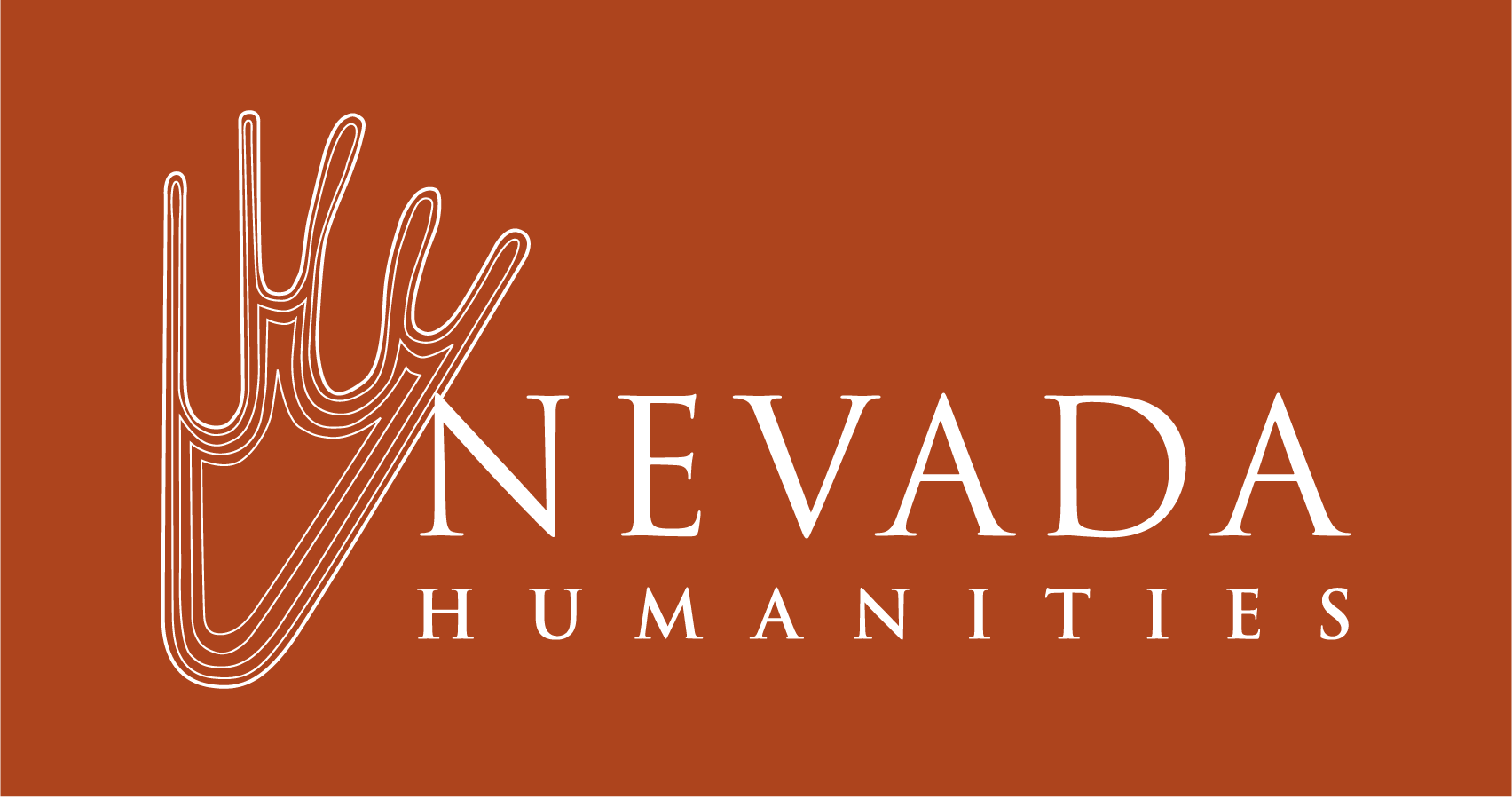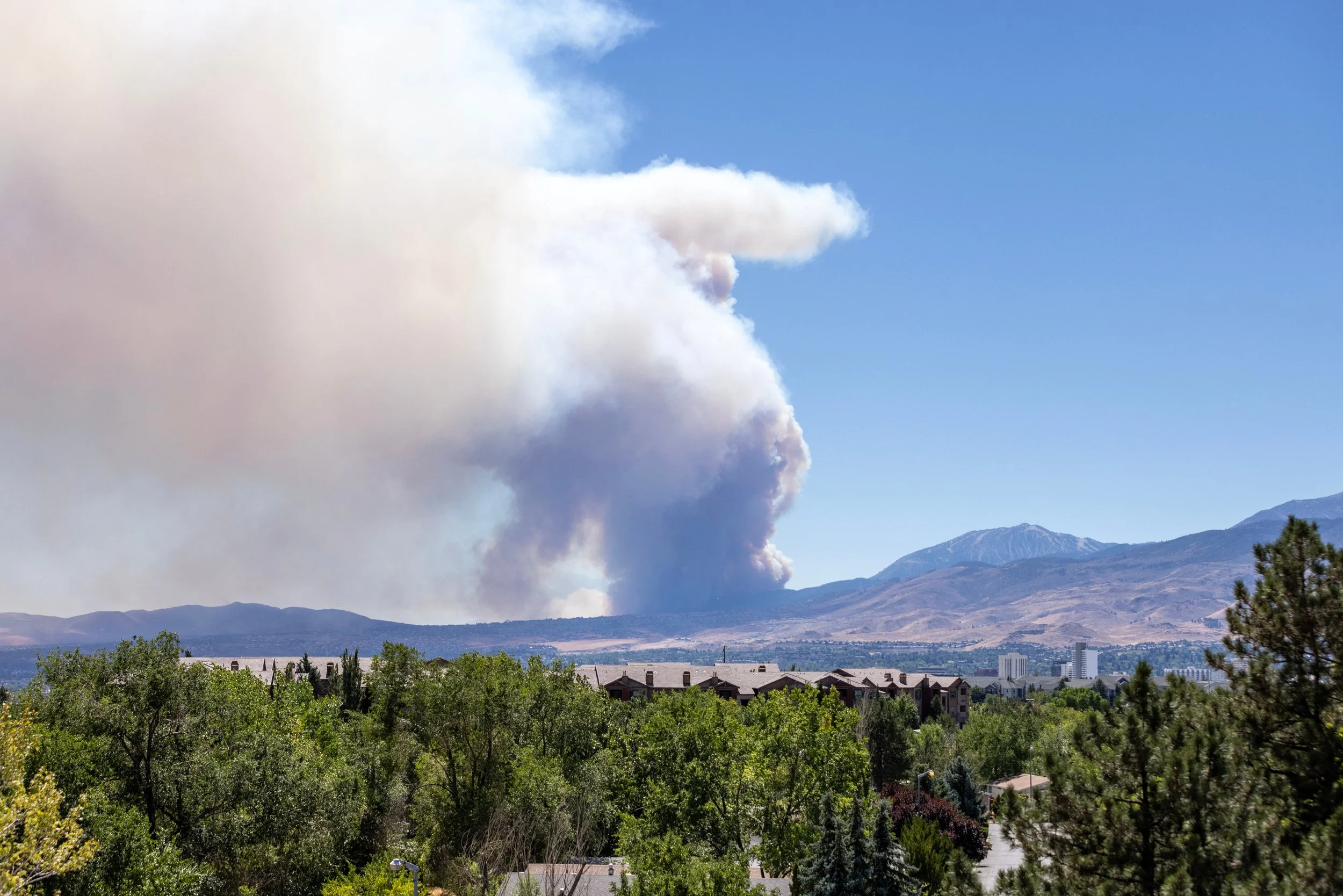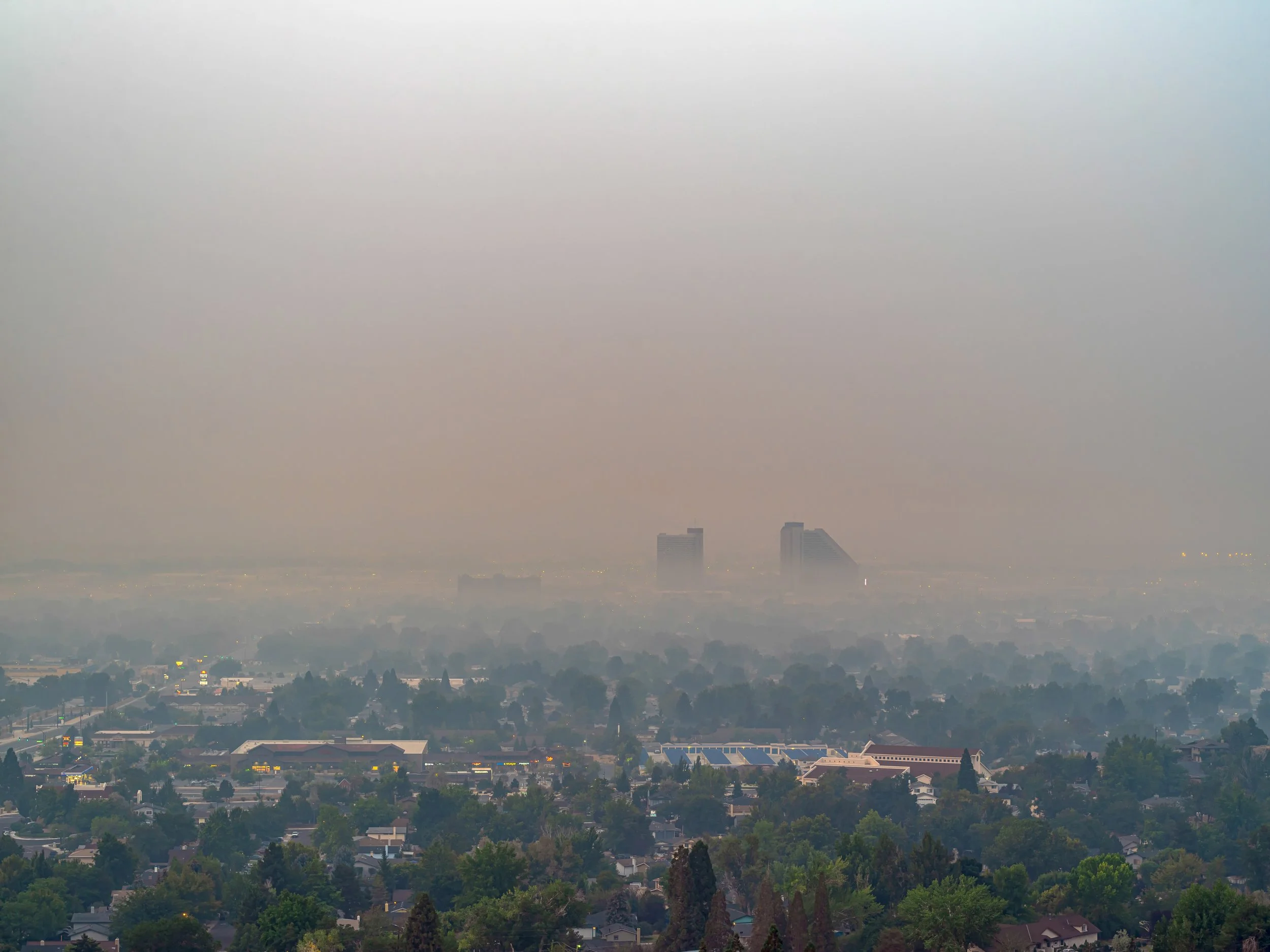Communicating Risk about Heat and Wildfire Smoke in Nevada
This blog post is the fourth and final post in a four-part series by Ashley Payette, a student at the University of Nevada, Reno. Payette served as a 2025 summer program intern at Nevada Humanities. This interview is generously provided in kind by Dr. Kristin VanderMolen. The Double Down blog is also supported by Nevada Humanities’ donors.
By Ashley Payette
Due to climate change, high temperatures and wildfire smoke have increased in intensity across Nevada. Communities need to be informed of these events so they may take action to protect themselves. To learn how the risks of heat and wildfire smoke are communicated with the public, I talked with Kristin VanderMolen, assistant research professor with the Division of Atmospheric Sciences at the Desert Research Institute.
Ashley Payette: In your paper “Identifying risk information needs of rural communities impacted by wildfire smoke: A mental models approach,” you mention that broad-scale wildfire smoke risk communication doesn’t always effectively reach rural communities. Can you expand on how a lack of access to information may put communities at risk?
Dr. Kristin VanderMolen: I’ll answer this in part by way of example. With respect to wildfire smoke, if you look at the EPA (Environmental Protection Agency) fire and smoke map, or the PurpleAir sensor map, you’ll see that most of rural Nevada lacks air quality monitoring. If you’re in rural Nevada, you can open a weather app, and it might give you an air quality reading, but because there isn’t monitoring, you’re getting an estimate that is not directly informed by local data. When you lack [local] air quality data, you don’t have that information on which to base your risk communication.
Photograph courtesy of Kristin VanderMolen.
It also matters what [information] you communicate to people and how. Even if you do have local data to inform your risk communication, there are also questions around content, language, and format. Are you providing content that will resonate with your audience? Is it available in multiple languages and formats so that it’s accessible to different groups? Does the messaging demonstrate awareness of barriers that people face in trying to mitigate their exposure? Throughout a lot of northern Nevada, people don’t have central air conditioning units, which is the primary tool for limiting exposure to both heat and wildfire smoke. If you have generalized messaging that is focused on how to use AC as effectively as possible, a lot of people aren’t going to be able to utilize that information, and it may even turn them away from that source.
Payette: In “Bridging Risk Communication and Health Literacy to Improve Health Outcomes Related to Heat,” you explain that risk communication and health literacy must not only work together, but also be personalized for their audience. How can we ensure that information remains accurate, accessible, and timely?
VanderMolen: One way is to diversify communication channels. If you have a central messaging agency, they can partner with local level entities to help get information out. It’s often the local level entities that know their audiences best; they already communicate with them, so they may be well-positioned to repackage general information that they receive into content that will resonate with their specific audiences.
Another way is to create opportunities for public education. These would be opportunities [for the public] to learn about the risks of exposure to heat and wildfire smoke, what groups are more at risk, what actions they can take to protect themselves, and how to access information sources that they may not be aware of. When that education is provided by trusted individuals or organizations, [the public is] more likely to recognize themselves as at risk, take the actions that were recommended to them, and seek out information from those sources that have been provided to them.
So, by diversifying communication channels, you can get information from central messaging agencies down to members of the public. By educating members of the public – using trusted members of the community to provide that education – you can also connect people to those central messaging agencies while ensuring they have the knowledge they need to interpret and make use of the information received.
Payette: A lot of the research that you’re doing focuses on how communities facing heat and wildfire smoke are more at risk for health issues. Can you expand on what these health risks are and how effective communication can help mitigate these health risks?
VanderMolen: With respect to heat, there are heat-related illnesses. These include things like heat cramps, heat exhaustion, and heat stroke. Heat is also the number one cause of weather-related mortality in the United States. With respect to wildfire smoke, there are the symptoms of exposure that I think, probably, a lot of us are familiar with: itchy eyes, runny nose, coughing. Exposure to wildfire smoke can also exacerbate cardiovascular, respiratory, and other chronic conditions.
Photograph courtesy of Kristin VanderMolen.
When it comes to communicating effectively to mitigate those risks, there are two important considerations. One is ensuring that the messaging that goes out to people is tailored to them. This means making sure that the content will resonate with them, reflects their beliefs and values, and is provided in appropriate languages and formats to be accessible. The other is making sure that the public is informed or educated in ways that allow them to be able to interpret and make use of that messaging, if they choose.
There are a lot of assumptions commonly made in the practice of risk communication. There’s this idea that you can simply put out a message and people will take into consideration and heed its advice. But there are a lot of assumptions there: your message is reaching people; people will take the message seriously; people who are members of at-risk groups know that they’re at-risk; people will know what actions to take to protect themselves. Those assumptions perpetuate the notion that there is a one-to-one relationship where information that is received is information that will be utilized. But it’s really important to tailor risk communication, to make sure the public is informed, and to recognize that there are always barriers to what people can do to protect themselves from heat and wildfire smoke.
Kristin VanderMolen is an assistant research professor at the Desert Research Institute in Reno. She has a background in environmental anthropology and conducts stakeholder- and community-driven research on climate impacts and adaptation, primarily related to extreme heat and wildfire smoke as individual and compound events. This includes social science research on hazard risk communication, climate and health literacy, and business disruption, as well as interdisciplinary research on environmental monitoring and health impact assessment. Dr. VanderMolen’s work takes place in the western U.S.



